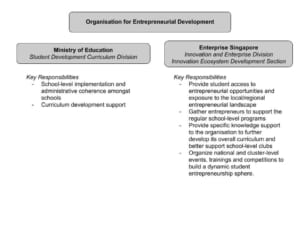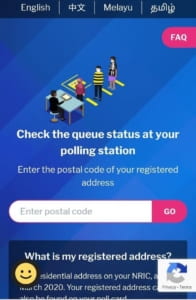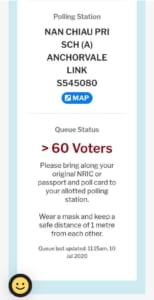By Aamir Bana (’24), Kelly Hui (’24), and Matthew Ling (’24)
Many elderly in Singapore face income insecurity in their retirement. To address this, we suggest that the Silver Support (SS) Scheme and Central Provident Fund (CPF) have a minimum combined pay-out amount of S$1,379 for low-income elderly — the minimum amount for a dignified retirement.
Background and Analysis
Why are the Elderly Still Working?
More and more elderly Singaporeans (aged 65 and above) are continuing to work; the employment rate for elderly citizens almost doubled from 2006 to 2018. As of 2019, about 1 in 4 elderly are working [1]. So why do the elderly spend their golden years employed?
Research suggests that for some, retirement is financially unfeasible. A recent study analysing the monthly financial decisions and considerations of elderly Singaporeans estimated that to pay for monthly basic necessities, elderly who are single require S$1,379 and elderly couples require S$2,351. [3]
How Does the State Currently Support the Elderly?
The Singapore Government has initiatives in place to support the elderly financially. The CPF account and the SS Scheme are two ways through which the State intervenes.
The CPF is a compulsory savings scheme and pension plan that requires employees to set aside 20% of their monthly income, and employers to top up an additional 17% of their pay. In addition to being used for healthcare, housing, and other purposes, CPF plays an integral role in helping workers set savings aside for retirement. At the age of 55, one can withdraw from their Retirement Account (with limits on when and how much one can draw).
The SS scheme provides quarterly cash pay-outs of S$1,200 to S$3,000 a year for the elderly within the bottom 20% income bracket.
Is This Enough?
According to the above study, many elderly recipients still do not receive the S$1,379 a month required for dignified living, even with their CPF and SS payouts combined.
The study noted that approximately half of the retirees in Singapore do not receive even the basic CPF annuity of less than S$800 per month — in 2018, persons aged 65-69 years old were paid $450 per month on average. Those aged 80-87 received just S$220 per month on average. [3] Accordingly, in 2011, it was found that CPF and other annuities accounted for just 13% of elderly’s income, with public assistance such as ComCare and the SS Scheme accounting for 2%. [3] For a fuller discussion of elderly’s various income sources, see Annex A.
One reason for this inadequacy is that the current regime gatekeeps its public assistance schemes very strictly — only the very poor are eligible for state support, excluding elderly who do not technically meet the eligibility criteria for the scheme.
We believe that state support should be a safety net, not a means of last resort. The Government can and should do more.
Talking Points
- By 2050, elderly Singaporeans will account for nearly 1 in 3 Singaporean citizens [4]. With an ageing population, there should be a fundamental safety net available for all retired elderly to lead a dignified life.
- There is a quantifiable income standard for a dignified living. A study titled “What older people need in Singapore: a household budgets study” suggests that single elderly (aged above 65 years) require S$1,379 a month, while elderly couples require S$2,351 a month.
- Work, family, and savings can be the first line of income source, but those who cannot sufficiently rely on these should be able to seek additional support from the Government. Specifically, the CPF (a retirement savings scheme) and the SS Scheme (top-up for the CPF) are insufficient as a long-term income source for the retired elderly.
- Current state schemes emphasise the need to prove poverty due to intense gatekeeping. As a result, welfare is seen as an undignified means of last resort rather than a basic right.
The Policy Idea
First, we propose that recipients of the SS scheme be awarded a top-up from the CPF Board, should their combined payout from both their CPF monthly payouts and the SS scheme be below S$1,379 per month. This top-up would be calibrated to provide the difference between the S$1,379 required for dignified living and the total amount of money which one receives through SS scheme and their monthly CPF withdrawal. In light of the government’s obligation to support the elderly who have contributed to Singaporean society during their working years, this difference should be funded by the CPF Board.
Secondly, we propose that eligibility for SS should now be determined by age, monthly CPF pay-out, and employment status of the person applying, without taking into consideration housing type or level of familial support. Furthermore, seniors should be able to appeal for admittance into the scheme.
Policy Analysis
Through these recommendations, we aim to expand upon the SS scheme and CPF, which were set up by the Government in service of low-income seniors.
We believe that increased CPF payouts for the bottom 20% of elderly Singaporeans should be well within the ambit of the CPF’s duties, since the Fund was conceived to last Singaporeans throughout their entire retirement. In cases where state support is insufficient, the Government should top-up their payouts using internal funds. Doing so allows the state to acknowledge its responsibility to these low-income older citizens, whilst also allowing them to reap the benefits of not having to expend additional resources on the social, mental and physical health problems which might arise as a result of elderly overwork or having insufficient finances for dignified living.
We also believe that by removing housing type and total income criteria from the SS scheme, we mitigate problems such as (1) low-income elderly having to liquidate their assets or downsize their homes to qualify for the scheme, or (2) low-income elderly being ineligible for the scheme by virtue of their family having resources which the elderly might not necessarily own, have access to, or can legally lay claim to.
Our policy does have some intrinsic limitations. Our revision ignores the income the retired elderly may receive from their adult children or draw from their personal savings, as the state has no reasonable means by which to unobtrusively gauge these sums. However, the assumption that elderly receive sufficient and regular incomes from their children at all is a flawed one, as is the assumption that all elderly possess sufficient private savings. While there will be some who take advantage of the system’s relaxed criterion, we believe that allowing a few free-riders to unfairly benefit is preferable to denying financial support to the elders who need it to attain a dignified retirement.
Under this policy, basic living standards would be a right, not a privilege. Taken together, these revisions would ensure that seniors will not be required to work past retirement age. While this policy does not seek to disincentivise work, it turns employment into a choice. We seek to create a vision of dignified retirement where elderly citizens are not completely beholden to their children, forced to downsize homes, nor coerced into working into their twilight years.
Key Facts
- The payout for the CPF and SS policies combined will add up to at least S$1,379 a month for the retired elderly by increasing CPF payouts.
- The policy will apply to those who are currently eligible for the SS scheme, which is targeted at the bottom 20% of low-income elderly. People can appeal to ensure there are no false barriers or excessive gate-keeping.
- Removing the housing type criteria of the current SS scheme will help recipients, who no longer need to prove their poverty by demonstrating that they do not have valuable assets they can liquidate such as homes, nor will there be a presumption that family members, estranged or otherwise, will be a source of support. Unlike the SS scheme, this policy will simply consider age, CPF contributions, and current employment status.
Annex A
By 2050, Singaporeans aged 65 and above will constitute 33.3% of Singaporean Citizens [4]. With the average lifespan of Singaporeans being 84.8 years [5], that leaves most Singaporeans reliant on one of five main sources of income for the remaining 20 years of their life: money from adult children; wage work; CPF and other annuities; private pension; and public assistance.
It is not enough to consider where the elderly get their money from, but how much money is required to lead a dignified retirement that includes the cost of holidays as well as healthcare.
In the study “What Older People Need in Singapore,” academics interviewed and analysed the financial decisions and considerations made on a monthly basis by 103 elderly Singaporeans. By examining their lived realities, these academics quantified that elderly (above 65 years of age) who are single require S$1,379 a month, while elderly couples require S$2,351 a month. Singles aged between 55 to 64 require S$1,721 [3].
With a specific dollar value, it is clearer to assess whether the sources of income for the retired elderly are sufficient and sustainable. The discussion below highlights briefly, including some of the core concerns with the current welfare and support structure.
Reliance on Children
The Singapore philosophy to welfare has always been “the family as a first line of support” [6]. Thus the state has actively promoted self-reliance before state-reliance. The result has been that “the most common income source (for the retired elderly) is adult children (78% of elderly people reported such income in 2011)” [3]. This places the burden of care squarely on adult children who may not have the means or desire to support their elderly parents. It presupposes every family unit is the same and must be able to financially support the retired elderly. This model can exacerbate inter-generational poverty, since those from a lower economic background struggle to support their own immediate family, and is demographically unsustainable, as more people have fewer or no children.
Wage Work: Merits and Demerits
As people age, it is only natural that their capacity to work dwindles. However, due to income insecurity, a significant population of elderly people must continue working. Nearly 21% of the retired elderly had work wages as their primary source of income in their retirement years [3]. The issue is for those who have to work because they cannot make ends meet rather than those who choose to work.
Singapore implemented a Progressive Wage Model, which is in fact a guaranteed minimum wage for three specific industries: cleaning, landscape, and security. There are plans to expand it further. Research has found that the median income of “three most common jobs among older workers range from 0.9 to 1.2 times” the minimum budget that is required to live dignified lives [3]. While there is growing consensus that the mandated minimum income is a great step towards the right direction, it forces elderly individuals who lack sufficient sources of income to sustain their retirement through work. The policy protects those who choose to work, but the question it raises is whether wage work becomes the default expectation for those who are unable to sustain dignified lives. There will always be those who are unable to work due to declining health, disability, or care work. They will then have to rely on the state.
Barriers to Welfare
Only 2% of retired elderly rely on the state directly as a source of income [3]. This is because policies have been designed with intense gate-keeping, where poverty needs to constantly be proved and verified by a bureaucracy, whose primary aim is to ensure that others (such as estranged children, civic organisations) step in as long-term support structures. The state’s goal is to be a temporary source of income, and thus pegs its payouts to sustained employment and identifies household types as indicators of wealth and prosperity. This strands the retired elderly who are asset-rich but cash-poor. Welfare is not considered a right but a temporary privilege, to be revoked at the slightest sign that those who are barely able to get by are beginning to make ends meet.
Central Provident Fund (CPF)
In 2013, it was found that only 55% of persons turning 55 had enough savings to fulfil the Basic Retirement Sum [3]. This translates to the fact that “around half of retirees will not receive even the basic annuity of less than S$800 per month.” Indeed in 2018, the CPF paid an average of S$450 per month to persons aged 65 to 69 years old, S$290 to those aged 70 to 79 years old, and just S$220 to those aged 80 to 87 years old [3]. As a source of income, it is targeted at augmenting alternative sources of income and not serve as the primary source of income. These cash payments are the savings made by Singaporeans throughout their years of employment. For those who earn less as a result of low-income wage work, their CPF will also correspondingly have lesser savings. The Government has policies to top-up the accounts of those whose CPF is lacking. However, the top-up is only for those who fulfil the most stringent conditions. The CPF is not a guaranteed pension scheme and cannot be fully relied on to ensure a dignified life.
If not family and work, Government
The Government does not issue handouts easily. Through intense “gate-keeping”, they deter people from seeking direct cash support. The policies that are the most generous require the most intrusive means to prove that you can qualify for it. These include in-person interviews and other administrative roadblocks to deter families in crisis, leaving only the very desperate. ComCare, the most generous scheme, “reaches less than 1% of the elderly population” [3]. Other schemes such as the SS Scheme and Goods and Services Tax voucher can only “add up to around half of the single elderly household budget” [3]. There is a constant contest between “universalism” and “generosity”. The more universal a scheme is, the less generous it’ll be, as seen in the SS Scheme, where the barriers to application are low. The less universal and more restrictive the scheme, the more generous it’ll be, as evidenced by ComCare. These policies are thought of as welfare rather than a basic right to a dignified life, and thus is not guaranteed in the same way education is in Singapore. This explains why only 2% of those who responded to the survey in 2011 listed it as their primary source of income.
Endnotes
- Liew, Maegan. 2019. “Seniors at work: The new norm for ageing in Singapore.” ASEAN Today. February 14, 2019. https://www.aseantoday.com/2019/02/seniors-at-work-the-new-norm-for-ageing-in-singapore/#:~:text=In%20Singapore%20today%2C%20one%20in,has%20hit%2040%25%20by%202015.
- Mokhtar, Faris. 2019. “Retirement and re-employment ages to be raised by 3 years, CPF contribution rates for older workers to go up.” Today, August 18, 2019. https://www.todayonline.com/singapore/govt-raise-retirement-age-65-and-re-employment-age-70-2030-cpf-contribution-rates-older.
- Ng, Kok Hoe, Teo You Yenn and Neo Yu Wei. 2019. “ What older people need in Singapore: a household budgets study. What older people need in Singapore: a household budgets study” ScholarbBank@NUS Repository : 1-70. https://scholarbank.nus.edu.sg/handle/10635/157643.
- Statista. 2019. “Forecasted share of the population aged 65 years and above in Singapore in 2019, 2030 and 2050.” Statista, October, 2019. https://www.statista.com/statistics/713663/singapore-forecast-aging-population/
- Straits Times. 2019. “Singaporeans have world’s longest life expectancy at 84.8 years.” Straits Times, June 20, 2019. https://www.straitstimes.com/singapore/health/singapore-tops-in-life-expectancy-at-848-years.
- Tan, Chuan Jin. 2015. “Speech By Mr Tan Chuan-Jin At Social Service Partners Conference 2015.” https://www.msf.gov.sg/media-room/Pages/Speech-by-Mr-Tan-Chuan-Speech-by-Mr-Tan-Chuan-Jin-at-Social-Service-Partners-Conference-2015.aspx.
Image credit: Flickr | Joan Campderrós-i-Canas






